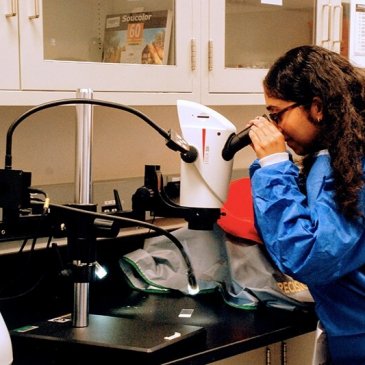Donor Network West Research

Donor Network West is at the forefront of research to improve outcomes of transplanted organs and help pave the way for the future of organ, eye and tissue donation and transplantation.
Research Speakers
-
2024 Inivted Research Speakers
March 28, 2024
Utilizing donated human dorsal root ganglion to redefine the molecular characterization of pain.
Jackson Brougher, PhD. Chief Scientific Officer, DoloromicsMay 22, 2024
Human Whole Eye Transplant: Successes and Challenges
Jeffrey Goldberg, Professor & Chair, Department of Ophthalmology, StanfordAugust 22, 2024
A Survey of Pulmonary Research Methods and Models: The Zeki Lab
Amir Zeki, Founder and Director VA COPD Clinic, UC DavisOctober 31, 2024
Using state-of-the-art approaches to understand human lung diseases in humans
Tushar Desai, Professor of Pulmonary, Allergy, and Critical Care Medicine at StanfordDecember 12, 2024
Using precision cut lung slices to investigate the cellular and molecular diversity of human pulmonary neuroendocrine cells
Christin Kuo - Assistant Professor, Stanford Pediatric Pulmonology -
2023 Invited Research Speakers
July 25, 2023 Novel models of blinding eye disease in the living human eye. Dr. Christopher Girkin, the Endowed Chair and Professor at EyeSight Foundation of Alabama, the University of Alabama.
April 17, 2023
The APOLLO project
Dr. Christopher Girkin, the Endowed Chair and Professor at EyeSight Foundation of Alabama, the University of Alabama.
April 17, 2023
The APOLLO project
 Professor Hsu Chi-yuan, the Chief of the Division of Nephrology at UCSF Health
March 20, 2023
Effects of Ageing in Human Cartilage and Osteoarthritis.
Professor Hsu Chi-yuan, the Chief of the Division of Nephrology at UCSF Health
March 20, 2023
Effects of Ageing in Human Cartilage and Osteoarthritis.
 Dr. Aysegul Atasoy-Zeybek, Research Fellow at the Musculoskeletal Gene Therapy Research Lab of the Mayo Foundation for Medical Education and Research.
March 1, 2023
Charting new frontiers in pulmonary research and drug discovery: The role of precision cut lung slices (PCLS)
Dr. Aysegul Atasoy-Zeybek, Research Fellow at the Musculoskeletal Gene Therapy Research Lab of the Mayo Foundation for Medical Education and Research.
March 1, 2023
Charting new frontiers in pulmonary research and drug discovery: The role of precision cut lung slices (PCLS)
 Dr. Ramaswamy Krishnan, Associate Professor of Emergency Medicine at Harvard Medical School
Dr. Ramaswamy Krishnan, Associate Professor of Emergency Medicine at Harvard Medical School -
2022 Invited Research Speakers
June 23, 2022
Bioengineering Human Organs - The Future is Now.
Jeff Ross PhD CEO, MiromatrixMay 9th 2022

Dr. Mark M. Davis. The Director of the Stanford Institute for Immunology, Transplantation, and Infection (ITI). Professor of Microbiology and Immunology. Howard Hughes Medical Institute Investigator at Stanford University.
Recent Research Activities
-
2024 Research Publications
- Jengmin Kang, Daniel I. Benjamin, Soochi Kim, Jayesh S. Salvi, Gurkamal Dhaliwal, Richard Lam, Armon Goshayeshi, Jamie O. Brett, Ling Liu & Thomas A. Rando. Depletion of SAM leading to loss of heterochromatin drives muscle stem cell ageing. Nature Metabolism volume 6, pages 153–168.
- Mention:
The muscle biopsy samples were donated via Donor Network West (DNW). The biopsy samples were taken after patients gave informed consent, as part of a human studies research protocol that was approved by the Stanford University.
- Mention:
- Lauren J. Donovan, Caldwell M. Bridges, Amy R. Nippert, Meng Wang, Shaogen Wu, Thomas E. Forman, Elena S. Haight, Nolan A. Huck, Sabrina F. Bond, Claire E. Jordan, Aysha M. Gardner, Ramesh V. Nair, and Vivianne L. Tawfik. Repopulated spinal cord microglia exhibit a unique transcriptome and contribute to pain resolution. Cell Reports.
- Mention:
All procedures were approved by the Stanford University Administrative Panel on Laboratory Animal Care and the Veterans Affairs, Palo Alto Health Care System Institutional Animal Care and Use Committee in accordance with American Veterinary Medical Association guidelines and the International Association for the Study of Pain. Human post-mortem spinal cord was obtained in collaboration with Donor Network West and received Stanford University Institutional Review Board exemption.
- Mention:
- James Kuo, Jasmina Uzunovic, Amanda Jacobson, Michelle Dourado, Sarah Gierke, Manohary Rajendram, Daniela Keilberg, Jordan Mar, Emily Stekol, Joanna Curry, Sofia Verstraete, Jessica Lund, Yuxin Liang, Fiona B Tamburini, Natalie S Omattage, Matthieu Masureel, Steven T Rutherford, David H Hackos, Man-Wah Tan, Allyson L Byrd, Mary E Keir, Elizabeth Skippington, Kelly M Storek. Toxigenic Clostridium perfringens isolated from at-risk pediatric inflammatory bowel disease patients. Journal of Crohn's and Colitis, jjae016, https://doi.org/10.1093/ecco-jcc/jjae016
- Mention:
The authors thank all donors and their families who participated in this study. We hereby express thanks for the cooperation of Donor Network West and all of the organ and tissue donors and their families, for giving the gift of life and the gift of knowledge, by their generous donation.
- Mention:
- Weiguo Fan, Kolade Adebowale, Lóránd Váncza, Yuan Li, Md Foysal Rabbi, Koshi Kunimoto, Dongning Chen, Gergely Mozes, David Kung-Chun Chiu, Yisi Li, Junyan Tao, Yi Wei, Nia Adeniji, Ryan L. Brunsing, Renumathy Dhanasekaran, Aatur Singhi, David Geller, Su Hao Lo, Louis Hodgson, Edgar G. Engleman, Gregory W. Charville, Vivek Charu, Satdarshan P. Monga, Taeyoon Kim, Rebecca G. Wells, Ovijit Chaudhuri & Natalie J. Török. Matrix viscoelasticity promotes liver cancer progression in the pre-cirrhotic liver. Nature volume 626, pages 635–642.
- Mention:
All human samples were de-identified and exempted (exemption 4). Human liver samples were obtained from the Stanford Diabetes Research Center (SDRC), Donor Network West (DNW), Stanford Tissue Bank and Clinical Biospecimen Repository and Processing Core (CBRPC) of the Pittsburgh Liver Research Center (PLRC).
- Mention:
- Daniel R. Calabrese, Shivaram Yellamilli, Christina Ekstrand, Jonathan P. Singer, Steven R. Hays, Lorriana E. Leard, Rupal J. Shah, Aida Venado, Nicholas A. Kolaitis, Alyssa Perez, Alexis Combes, John R. Greenland. Macrophage and CD8 T Cell Discordance are Associated with Acute Lung Allograft Dysfunction Progression. The Journal of Heart and Lung Transplantation. Available online 15 February.
- Mention:
We are thankful for the cooperation of Donor Network West, for all the organ and tissue donors, and their families for giving gifts of life and knowledge with their generous donation.
- Mention:
- Jengmin Kang, Daniel I. Benjamin, Soochi Kim, Jayesh S. Salvi, Gurkamal Dhaliwal, Richard Lam, Armon Goshayeshi, Jamie O. Brett, Ling Liu & Thomas A. Rando. Depletion of SAM leading to loss of heterochromatin drives muscle stem cell ageing. Nature Metabolism volume 6, pages 153–168.
-
2023 Research Publications
- Correlation of Donor Electrocardiogram Abnormalities with Donor Echocardiograms and Angiograms: The Donor Heart Study | The Journal of Heart Lung Transplantation 2023 - Volume 42, Issue 4, Supplement, S229, April 2023
- Abstract: Electrocardiographic (ECG) abnormalities are common after brain death in potential organ donors, but their clinical significance is unclear. We assessed the prevalence of ECG abnormalities and their association with cardiac structural and angiographic abnormalities in a large nationwide donor cohort.
- Authors: Amy E Anderson, Iwen Wu, Alexis J Parrillo, Matthew T, Wolf David R Maestas Jr, Ian Graham, Ada J Tam, Rachael M Payne, Jeffrey Aston, Carisa M Cooney, Patrick Byrne, Damon S Cooney, & Jennifer H Elisseeff
- Mention: Donor tissue for clinical studies was screened and acquired from a tissue bank (Donor Network West, San Ramon, CA).
- SARS-CoV-2 Infection of Lung Organoids Reveals Conserved Use of Tetraspanin-8 by Ancestral-, Delta-, and Omicron-Variants | Stem Cell Reports. 2023 Mar 14; 18(3):636-653. doi: 10.1016/j.stemcr.2023.01.011
- Abstract: Ancestral SARS coronavirus-2 (SARS-CoV-2) and variants of concern (VOC) caused a global pandemic with a spectrum of disease variation linked to immune dysfunction. The mechanistic underpinnings of variation related to lung epithelium are relatively understudied. Here, we biobanked lung organoids by preserving stem cell function. We optimized viral infection with H1N1 swine flu and next comprehensively characterized epithelial responses to SARS-CoV-2 infection in phenotypically stable lung organoids from twenty different subjects. We discovered Tetraspanin 8 (TSPAN8) as a novel mediator of SARS-CoV-2-infection. TSPAN8 facilitates SARS-CoV-2 infection rates but does not via enhanced ACE-2-mediated entry. In head-to-head comparisons with Ancestral SARS-CoV-2, Delta- and Omicron- VOC displayed lower overall infection rates of organoids but triggered increased epithelial interferon responses. All variants shared highest tropism for ciliated- and goblet- cells. ACE2- and TSPAN8- expression are universal features of infected cells. TSPAN8-blocking antibodies diminish SARS-CoV-2 infection and may spur novel avenues for COVID-19 therapy.
- Authors: Lisiena Hysenaj, Samantha Little, Kayla Kulhanek, Melia Magnen, Kriti Bahl, Oghenekevwe M Gbenedio, Morgan Prinz, Lauren Rodriguez, Christopher Andersen 4, Arjun Arkal Rao, Alan Shen, Jean-Christophe Lone, Leonard C Lupin-Jimenez, Luke R Bonser, Nina K Serwas, Eran Mick, Mir M Khalid, Taha Y Taha, Renuka Kumar, Jack Z Li, Vivianne W Ding, Shotaro Matsumoto, Mazharul Maishan, Bharath Sreekumar1, Camille Simoneau, Irina Nazarenko, Michael G Tomlinson, Khajida Khan, Anne von Gottberg, Alex Sigal, Mark R Looney, Gabriela K Fragiadakis, David M Jablons, Charles R Langelier, Michael Matthay, Matthew Krummel, David J Erle, Alexis J Combes, Anita Sil, Melanie Ott, Johannes R Kratz, Jeroen P Roose
- Mention: … (Donor Network West) as previously described (Ross et al., 2019). Explicit approval for the use of donor lungs for research was sought from each donor’s family by Donor Network West …
- An autocrine signaling circuit in hepatic stellate cells underlies advanced fibrosis in nonalcoholic steatohepatitis | Sci Transl Med, . 2023 Jan 4;15(677):eadd3949. doi: 10.1126/scitranslmed.add3949. Epub 2023 Jan 4.
- Abstract: Advanced hepatic fibrosis, driven by the activation of hepatic stellate cells (HSCs), affects millions worldwide and is the strongest predictor of mortality in nonalcoholic steatohepatitis (NASH); however, there are no approved antifibrotic therapies. To identify antifibrotic drug targets, we integrated progressive transcriptomic and morphological responses that accompany HSC activation in advanced disease using single-nucleus RNA sequencing and tissue clearing in a robust murine NASH model. In advanced fibrosis, we found that an autocrine HSC signaling circuit emerged that was composed of 68 receptor-ligand interactions conserved between murine and human NASH. These predicted interactions were supported by the parallel appearance of markedly increased direct stellate cell-cell contacts in murine NASH. As proof of principle, pharmacological inhibition of one such autocrine interaction, neurotrophic receptor tyrosine kinase 3–neurotrophin 3, inhibited human HSC activation in culture and reversed advanced murine NASH fibrosis. In summary, we uncovered a repertoire of antifibrotic drug targets underlying advanced fibrosis in vivo. The findings suggest a therapeutic paradigm in which stage-specific therapies could yield enhanced antifibrotic efficacy in patients with advanced hepatic fibrosis.
- Authors: Shuang Wang, Kenneth Li, Eliana Pickholz, Ross Dobie, Kylie P Matchett, Neil C Henderson, Chris Carrico, Ian Driver, Martin Borch Jensen, Li Chen, Mathieu Petitjean, Dipankar Bhattacharya, Maria I Fiel, Xiao Liu, Tatiana Kisseleva, Uri Alon, Miri Adler, Ruslan Medzhitov, & Scott L Friedman
- Mention: … We thank Donor Network West for cooperation in this project. We thank H. Zhao for technical support. …
- A decade of molecular cell atlases | - Trends in Genetics, 2022 - Elsevier
- Highlights: The development of molecular cell atlases has been crucially dependent on technological advances, which can be traced back three decades.
Important technologies include the development of single-cell cDNA libraries, whole-transcriptome analysis such as next-generation sequencing, and microfluidic tools that enable high-throughput cell processing.
A vibrant international community has made important scientific contributions with the use of these tools to discover and characterize cell types over an extended period, starting around 2011–2012.
Whole-organism cell atlases are now reaching fruition for a number of important species, including human, and they serve as phenotypic companions to the genome for these animals.
- Authors: SR Quake
- Mention: …, a senior executive from the biotechnology industry, decided to join my laboratory to lead the effort; second, that we were able to build a strong relationship with Donor Network West, …
- Highlights: The development of molecular cell atlases has been crucially dependent on technological advances, which can be traced back three decades.
- Surgical approach for rapid and minimally traumatic recovery of human inner ear tissues from deceased organ donors | Y Vaisbuch, DK Hosseini, A Wagner, B Hirt… - Otology & …, 2022 - ingentaconnect.com
- Abstract: Development of rapid and minimally traumatic inner ear tissue recovery. Primarily, establishing an efficient process which includes collaboration with transplant network, implementing a consent protocol, developing and training an on-call recovery team, and designing a portable surgical kit suitable for use in a variety of settings.
- Authors: Yona Vaisbuch, Davood K Hosseini, Andreas Wagner, Bernhard Hirt, Marcus Mueller, Ravikumar Ponnusamy, Stefan Heller, Alan G Cheng, Hubert Löwenheim, & Ksenia A Aaron
- Mention: … Ahmad Salehi, and the whole Research Coordinating team at the Donor Network West for their tireless work in helping this project succeed.
- The Tabula Sapiens: A multiple-organ, single-cell transcriptomic atlas of humans | Science, 2022 May 13;376(6594):eabl4896. doi: 10.1126/science.abl4896. Epub 2022 May 13.
- Abstract: Although the genome is often called the blueprint of an organism, it is perhaps more accurate to describe it as a parts list composed of the various genes that may or may not be used in the different cell types of a multicellular organism. Although nearly every cell in the body has essentially the same genome, each cell type makes different use of that genome and expresses a subset of all possible genes. This has motivated efforts to characterize the molecular composition of various cell types within humans and multiple model organisms, both by transcriptional and proteomic approaches. We created a human reference atlas comprising nearly 500,000 cells from 24 different tissues and organs, many from the same donor. This atlas enabled molecular characterization of more than 400 cell types, their distribution across tissues, and tissue-specific variation in gene expression.
- Authors: Tabula Sapiens Consortium*; Robert C Jones, Jim Karkanias, Mark A Krasnow, Angela Oliveira Pisco, Stephen R Quake, Julia Salzman, Nir Yosef, Bryan Bulthaup, Phillip Brown, William Harper, Marisa Hemenez, Ravikumar Ponnusamy, Ahmad Salehi, Bhavani A Sanagavarapu, Eileen Spallino, Ksenia A Aaron, Waldo Concepcion, James M Gardner, Burnett Kelly, Nikole Neidlinger, Zifa Wang, Sheela Crasta, Saroja Kolluru, Maurizio Morri, Angela Oliveira Pisco, Serena Y Tan, Kyle J Travaglini, Chenling Xu, Marcela Alcántara-Hernández, Nicole Almanzar, Jane Antony, Benjamin Beyersdorf, Deviana Burhan, Kruti Calcuttawala, Matthew M Carter, Charles K F Chan, Charles A Chang, Stephen Chang, Alex Colville, Sheela Crasta, Rebecca N Culver, Ivana Cvijović, Gaetano D'Amato, Camille Ezran, Francisco X Galdos, Astrid Gillich, William R Goodyer, Yan Hang, Alyssa Hayashi, Sahar Houshdaran, Xianxi Huang, Juan C Irwin, SoRi Jang, Julia Vallve Juanico, Aaron M Kershner, Soochi Kim, Bernhard Kiss, Saroja Kolluru, William Kong, Maya E Kumar, Angera H Kuo, Rebecca Leylek, Baoxiang Li, Gabriel B Loeb, Wan-Jin Lu, Sruthi Mantri, Maxim Markovic, Patrick L McAlpine, Antoine de Morree, Maurizio Morri, Karim Mrouj, Shravani Mukherjee, Tyler Muser, Patrick Neuhöfer, Thi D Nguyen, Kimberly Perez, Ragini Phansalkar, Angela Oliveira Pisco, Nazan Puluca, Zhen Qi, Poorvi Rao, Hayley Raquer-McKay, Nicholas Schaum, Bronwyn Scott, Bobak Seddighzadeh, Joe Segal, Sushmita Sen, Shaheen Sikandar, Sean P Spencer, Lea C Steffes, Varun R Subramaniam, Aditi Swarup, Michael Swift, Kyle J Travaglini, Will Van Treuren, Emily Trimm, Stefan Veizades, Sivakamasundari Vijayakumar, Kim Chi Vo, Sevahn K Vorperian, Wanxin Wang, Hannah N W Weinstein, Juliane Winkler, Timothy T H Wu, Jamie Xie, Andrea R Yung, Yue Zhang, Angela M Detweiler, Honey Mekonen, Norma F Neff, Rene V Sit, Michelle Tan, Jia Yan, Gregory R Bean, Vivek Charu, Erna Forgó, Brock A Martin, Michael G Ozawa, Oscar Silva, Serena Y Tan, Angus Toland, Venkata N P Vemuri, Shaked Afik, Kyle Awayan, Olga Borisovna Botvinnik, Ashley Byrne, Michelle Chen, Roozbeh Dehghannasiri, Angela M Detweiler, Adam Gayoso, Alejandro A Granados, Qiqing Li, Gita Mahmoudabadi, Aaron McGeever, Antoine de Morree, Julia Eve Olivieri, Madeline Park, Angela Oliveira Pisco, Neha Ravikumar, Julia Salzman, Geoff Stanley, Michael Swift, Michelle Tan, Weilun Tan, Alexander J Tarashansky, Rohan Vanheusden, Sevahn K Vorperian, Peter Wang, Sheng Wang, Galen Xing, Chenling Xu, Nir Yosef, Marcela Alcántara-Hernández, Jane Antony, Charles K F Chan, Charles A Chang, Alex Colville, Sheela Crasta, Rebecca Culver, Les Dethlefsen, Camille Ezran, Astrid Gillich, Yan Hang, Po-Yi Ho, Juan C Irwin, SoRi Jang, Aaron M Kershner, William Kong, Maya E Kumar, Angera H Kuo, Rebecca Leylek, Shixuan Liu, Gabriel B Loeb, Wan-Jin Lu, Jonathan S Maltzman, Ross J Metzger, Antoine de Morree, Patrick Neuhöfer, Kimberly Perez, Ragini Phansalkar, Zhen Qi, Poorvi Rao, Hayley Raquer-McKay, Koki Sasagawa, Bronwyn Scott, Rahul Sinha, Hanbing Song, Sean P Spencer, Aditi Swarup, Michael Swift, Kyle J Travaglini, Emily Trimm, Stefan Veizades, Sivakamasundari Vijayakumar, Bruce Wang, Wanxin Wang, Juliane Winkler, Jamie Xie, Andrea R Yung, Steven E Artandi, Philip A Beachy, Michael F Clarke, Linda C Giudice, Franklin W Huang, Kerwyn Casey Huang, Juliana Idoyaga, Seung K Kim, Mark Krasnow, Christin S Kuo, Patricia Nguyen, Stephen R Quake, Thomas A Rando, Kristy Red-Horse, Jeremy Reiter, David A Relman, Justin L Sonnenburg, Bruce Wang, Albert Wu, Sean M Wu, & Tony Wyss-Coray
- Mentions:… We also thank Donor Network West for their partnership on this project, the UCSF Liver Center
- Maximizing the use of potential donors through increased rates of family approach for authorization |Am J Transplant. 2022 Dec;22(12):2834-2841. doi: 10.1111/ajt.17194. Epub 2022 Sep 22.
- Abstract: In the United States, a small proportion of potential deceased organ donor referrals lead to donation and recovery. Understanding variation in the processes involved between organ procurement organizations (OPOs) may help increase deceased donation and reduce the organ shortage. We studied 103 923 referrals from 10 OPOs from 2018 to 2019, of which 14.4% led to approach for authorization, 8.2% led to authorization, 5.1% led to organ recovery, and 4.8% led to transplantation. First-person authorization (FPA) was associated with threefold higher odds of donation (OR = 2.83 3.02 3.22, p < .001). Female referrals had 11% lower odds of approach; when approached, Black and Hispanic referrals had 46% and 35% lower odds of authorization, respectively (all p < .001). There was substantial OPO-level variation in rates of approach, authorization, and organ recovery, which persisted after adjusting for age, sex, race, and FPA status. An OPO's relative rate of approach correlated strongly with its relative rate of donation among all referrals (ρ = 0.43). Correlation between an individual OPO's authorization rate among approached families, and overall rate of donation, was negative, suggesting that high authorization rates may be the result of selective approach practices. Therefore, approaching a higher proportion of families for authorization may lead to higher donation rates.
- Authors: Macey L Levan, Allan B Massie, Chad Trahan, Jonathan Hewlett, Tyler Strout, Samantha B Klitenic, Karen B Vanterpool, Dorry L Segev, Bradley L Adams, & Patricia Niles
- Mention: Our study population consisted of 103 923 ventilated donor re-ferrals in the following 10 OPOs in the United States between January 1, 2018 and December 31, 2019: (1) OurLegacy, (2) Donor Network West, (3) Gift of Hope, (4) Indiana Donor Network, (5)…
- Cross-species transcriptomic atlas of dorsal root ganglia reveals species-specific programs for sensory function | Nat Commun, 2023 Jan 23;14(1):366. doi: 10.1038/s41467-023-36014-0.
- Abstract: Sensory neurons of the dorsal root ganglion (DRG) are critical for maintaining tissue homeostasis by sensing and initiating responses to stimuli. While most preclinical studies of DRGs are conducted in rodents, much less is known about the mechanisms of sensory perception in primates. We generated a transcriptome atlas of mouse, guinea pig, cynomolgus monkey, and human DRGs by implementing a common laboratory workflow and multiple data-integration approaches to generate high-resolution cross-species mappings of sensory neuron subtypes. Using our atlas, we identified conserved core modules highlighting subtype-specific biological processes related to inflammatory response. We also identified divergent expression of key genes involved in DRG function, suggesting species-specific adaptations specifically in nociceptors that likely point to divergent function of nociceptors. Among these, we validated that TAFA4, a member of the druggable genome, was expressed in distinct populations of DRG neurons across species, highlighting species-specific programs that are critical for therapeutic development.
- Authors: Min Jung, Michelle Dourado, James Maksymetz, Amanda Jacobson, Benjamin I Laufer, Miriam Baca, Oded Foreman, David H Hackos, Lorena Riol-Blanco, & Joshua S Kaminker
- Mention: … Frozen Human DRGs were obtained from Anabios (6 donors) and Donor Network West (1 …
- Effects of Multi-Stage Procurement on the Viability and Function of Human Donor Parathyroid Glands | J Surg Res . 2022 Aug;276:404-415. doi: 10.1016/j.jss.2022.03.014. Epub 2022 Apr 22.
- Abstract: Parathyroid allotransplantation is an emerging treatment for severe hypoparathyroidism. Ensuring the viability and functional integrity of donor parathyroid glands following procurement is essential for optimal transplantation outcomes.
- Authors: Yvonne M Kelly, Casey Ward, Run Zhang, Shareef Syed, Peter G Stock, Quan-Yang Duh, Julie A Sosa, James Koh
- Mention: … This work was supported by a grant from the California Institute of Regenerative Medicine #CLIN2-11437 (PGS, SS, QD, and JK) and facilitated by Donor Network West (DNW). This …
- Immediate myeloid depot for SARS-CoV-2 in the human lung | Res Sq. 2022 May 17:rs.3.rs-1639631. doi: 10.21203/rs.3.rs-1639631/v1.
- Abstract: In the severe acute respiratory syndrome coronavirus 2 (SARS-CoV-2) pandemic1, considerable focus has been placed on a model of viral entry into host epithelial populations, with a separate focus upon the responding immune system dysfunction that exacerbates or causes disease. We developed a precision-cut lung slice model2,3 to investigate very early host-viral pathogenesis and found that SARS-CoV-2 had a rapid and specific tropism for myeloid populations in the human lung. Infection of alveolar macrophages was partially dependent upon their expression of ACE2, and the infections were productive for amplifying virus, both findings which were in contrast with their neutralization of another pandemic virus, Influenza A virus (IAV). Compared to IAV, SARS-CoV-2 was extremely poor at inducing interferon-stimulated genes in infected myeloid cells, providing a window of opportunity for modest titers to amplify within these cells. Endotracheal aspirate samples from humans with the acute respiratory distress syndrome (ARDS) from COVID-19 confirmed the lung slice findings, revealing a persistent myeloid depot. In the early phase of SARS-CoV-2 infection, myeloid cells may provide a safe harbor for the virus with minimal immune stimulatory cues being generated, resulting in effective viral colonization and quenching of the immune system.
- Authors: Magnen M, You R, Rao AA, Davis RT, Rodriguez L, Simoneau CR, Hysenaj L, Hu KH; UCSF COMET Consortium; Love C, Woodruff PG, Erle DJ, Hendrickson CM, Calfee CS, Matthay MA, Roose JP, Sil A, Ott M, Langelier CR, Krummel MF, & Looney MR.
- Mention: … Human donor lungs were obtained from Donor Network West. ...
- Identifying transcriptomic downstream targets of genes commonly mutated in Hereditary Hemorrhagic Telangiectasia | bioRxiv, 2022 - biorxiv.org, doi: https://doi.org/10.1101/2022.11.25.517570
- Abstract: Hereditary Hemorrhagic Telangiectasia (HHT) is an autosomal dominant disease that causes arteriovenous vascular malformations (AVMs) in different organs, including the lung. Three genes, ENG (endoglin), ACVRL1 (ALK1) and SMAD4, all members of the TGF-β/BMPR2 signaling pathway, are responsible for over 85% of all HHT cases. However, how these loss-of-function gene mutations lead to AVMs formation and what common downstream signaling they target is unknown. Here, using a combination of siRNA-mediated gene silencing, whole transcriptomic RNA sequencing, bioinformatic analysis, transcriptomic-based drug discovery, endothelial cells functional assays and VEGF signaling analysis, and ex vivo precision cut lung slice (PCLS) cultures approach, we uncovered common downstream transcriptomic gene signatures of HHT-casing genes and identified promising drug for HHT. We found the commonly used BMPR2-signaling downstream target ID1 is not a common downstream target of all the three HHT genes knockdown in human pulmonary microvascular endothelial cells (PMVECs). We identified novel common downstream targets of all the three HHT-causing genes that were enriched for HHT-related biological process and signaling pathways. Among those downstream genes, LYVE1, GPNMB, and MC5R were strong downstream targets that could serve as a better common downstream target than ID1. Furthermore, using the common downstream upregulated genes (HHT disease signature) following HHT gene knockdown, we identified a small molecule drug, Brivanib, that reversed the HHT disease signature, and inhibited VEGF-induced ERK1/2 phosphorylation, proliferation, and angiogenesis in PMVECs and inhibited some of the upregulated HHT disease genes in PCLS. Our findings suggest that Brivanib could be an emerging new drug for HHT.
- Authors: Md Khadem Ali, Yu Liu, Katharina Schimmel, Nicholas H. Juul, Courtney A. Stockman, Joseph C. Wu, & Edda F. Spiekerkoetter
- Mention: … Lung tissue pieces were obtained from a healthy donor collected from the Donor Network West, San Ramon, CA. …
- Extracellular Matrix Viscoelasticity Drives Liver Cancer Progression in Pre-Cirrhotic NASH | … - 2022 - researchsquare.com
- Abstract: Type 2 diabetes mellitus (T2DM) is a major risk factor for hepatocellular carcinoma (HCC). Changes in extracellular matrix (ECM) mechanics contribute to cancer development and increased stiffness is known to promote HCC progression in cirrhotic conditions. T2DM is characterized by an accumulation of advanced glycation end products (AGEs) in the ECM; however, how this affects HCC in non-cirrhotic conditions is unclear. Here, we find that in patients and animal models AGEs promote changes in collagen architecture and enhance ECM viscoelasticity, with greater viscous dissipation and faster stress relaxation, but not changes in stiffness. High AGEs and viscoelasticity combined with oncogenic β-catenin signaling promote HCC induction, while inhibiting AGEs production, reconstituting the clearance receptor AGER1, or breaking AGE-mediated collagen crosslinks reduce viscoelasticity and HCC growth. Matrix analysis and computational modeling demonstrate that lower interconnectivity of AGEs-bundled collagen matrix, marked by shorter fiber length and greater heterogeneity, enhance viscoelasticity. Mechanistically, animal studies and 3D cell cultures show that enhanced viscoelasticity promotes HCC cell proliferation and invasion through integrin β1–Tensin 1–YAP mechanotransduction pathway. These results reveal for the first time that AGEs-mediated structural changes enhance ECM viscoelasticity, and that viscoelasticity can drive cancer progression in vivo, independent of stiffness.
- Authors: Natalie Török, Weiguo Fan,Kolade Adebowale, Yuan Li, Foysal Rabbi, Lorand Vancza, Dongning Chen, Koshi Kunimoto, Gergely Mozes, Yisi Li, Junyan Tao,Satdarshan Monga, Gregory Charville, Rebecca Wells, Renu Dhanasekaran, Taeyoon Kim, & Ovijit Chaudhuri
- Mention: …Human liver samples were obtained from Stanford Diabetes ResearchCenter (SDRC), Donor Network West (DNW) and Stanford Tissue Bank…
- SARS-CoV-2 infection of airway organoids reveals conserved use of Tetraspanin-8 by Ancestral, Delta, and Omicron variants | Stem Cell Reports. 2023 Mar 14;18(3):636-653. doi: 10.1016/j.stemcr.2023.01.011. Epub 2023 Feb 23.
- Summary: Ancestral SARS coronavirus-2 (SARS-CoV-2) and variants of concern (VOC) caused a global pandemic with a spectrum of disease severity. The mechanistic explaining variations related to airway epithelium are relatively understudied. Here, we biobanked airway organoids (AO) by preserving stem cell function. We optimized viral infection with H1N1/PR8 and comprehensively characterized epithelial responses to SARS-CoV-2 infection in phenotypically stable AO from 20 different subjects. We discovered Tetraspanin-8 (TSPAN8) as a facilitator of SARS-CoV-2 infection. TSPAN8 facilitates SARS-CoV-2 infection rates independently of ACE2-Spike interaction. In head-to-head comparisons with Ancestral SARS-CoV-2, Delta and Omicron VOC displayed lower overall infection rates of AO but triggered changes in epithelial response. All variants shared highest tropism for ciliated and goblet cells. TSPAN8-blocking antibodies diminish SARS-CoV-2 infection and may spur novel avenues for COVID-19 therapy.
- Authors: Lisiena Hysenaj, Samantha Little, Kayla Kulhanek, Melia Magnen, Kriti Bahl, Oghenekevwe M Gbenedio, Morgan Prinz, Lauren Rodriguez, Christopher Andersen, Arjun Arkal Rao, Alan Shen, Jean-Christophe Lone, Leonard C Lupin-Jimenez, Luke R Bonser, Nina K Serwas, Eran Mick, Mir M Khalid1, Taha Y Taha1, Renuka Kumar1, Jack Z Li, Vivianne W Ding, Shotaro Matsumoto, Mazharul Maishan, Bharath Sreekumar1, Camille Simoneau1, Irina Nazarenko, Michael G Tomlinson, Khajida Khan, Anne von Gottberg, Alex Sigal, Mark R Looney, Gabriela K Fragiadakis, David M Jablons, Charles R Langelier, Michael Matthay, Matthew Krummel, David J Erle, Alexis J Combes, Anita Sil, Melanie Ott, & Johannes R Kratz
- Mention: … received from organ procurement organization (Donor Network West) as previously described (… for research was sought from each donor’s family by Donor Network West as part of the …
- Single-nucleus chromatin accessibility profiling highlights regulatory mechanisms of coronary artery disease risk | Nat Genet . 2022 Jun;54(6):804-816. doi: 10.1038/s41588-022-01069-0. Epub 2022 May 19.
- Abstract: Coronary artery disease (CAD) is a complex inflammatory disease involving genetic influences across cell types. Genome-wide association studies have identified over 200 loci associated with CAD, where the majority of risk variants reside in noncoding DNA sequences impacting cis-regulatory elements. Here, we applied single-nucleus assay for transposase-accessible chromatin with sequencing to profile 28,316 nuclei across coronary artery segments from 41 patients with varying stages of CAD, which revealed 14 distinct cellular clusters. We mapped ~320,000 accessible sites across all cells, identified cell-type-specific elements and transcription factors, and prioritized functional CAD risk variants. We identified elements in smooth muscle cell transition states (for example, fibromyocytes) and functional variants predicted to alter smooth muscle cell- and macrophage-specific regulation of MRAS (3q22) and LIPA (10q23), respectively. We further nominated key driver transcription factors such as PRDM16 and TBX2. Together, this single-nucleus atlas provides a critical step towards interpreting regulatory mechanisms across the continuum of CAD risk.
- Authors: Adam W Turner, Shengen Shawn Hu, Jose Verdezoto Mosquera, Wei Feng Ma, Chani J Hodonsky, Doris Wong, Gaëlle Auguste, Yipei Song, Katia Sol-Church Emily Farber, Soumya Kundu, Anshul Kundaje Nicolas G Lopez, Lijiang Ma1, Saikat Kumar B Ghosh, Suna Onengut-Gumuscu, Euan A Ashley, Thomas Quertermous, Aloke V Finn, Nicholas J Leeper, Jason C Kovacic, Johan L M Björkegren1, Chongzhi Zang, & Clint L Miller
- Mention: … Coronary artery samples were also obtained at Stanford University (from Donor Network West and California Transplant Donor Network) from nondiseased donor hearts rejected by …
- Individual variability of neural computations in the primate retina | Neuron. 2022 Feb 16;110(4):698-708.e5. doi: 10.1016/j.neuron.2021.11.026. Epub 2021 Dec 20.
- Summary: Variation in the neural code contributes to making each individual unique. We probed neural code variation using ∼100 population recordings from major ganglion cell types in the macaque retina, combined with an interpretable computational representation of individual variability. This representation captured variation and covariation in properties such as nonlinearity, temporal dynamics, and spatial receptive field size and preserved invariances such as asymmetries between On and Off cells. The covariation of response properties in different cell types was associated with the proximity of lamination of their synaptic input. Surprisingly, male retinas exhibited higher firing rates and faster temporal integration than female retinas. Exploiting data from previously recorded retinas enabled efficient characterization of a new macaque retina, and of a human retina. Simulations indicated that combining a large dataset of retinal recordings with behavioral feedback could reveal the neural code in a living human and thus improve vision restoration with retinal implants.
- Authors: Nishal P Shah, Nora Brackbill, Ryan Samarakoon, Colleen Rhoades, Alexandra Kling, Alexander Sher, Alan Litke, Yoram Singer, Jonathon Shlens, & E J Chichilnisky
- Mention: … The human eye was provided by Donor Network West (San Ramon, CA). We are thankful for the cooperation of Donor Network West and all of the organ and tissue donors and their …
- Lung transplant recipients with idiopathic pulmonary fibrosis have impaired alloreactive immune responses | J Heart Lung Transplant. 2022 May;41(5):641-653. doi: 10.1016/j.healun.2021.11.012.…
- Background: Telomere dysfunction is associated with idiopathic pulmonary fibrosis (IPF) and worse outcomes following lung transplantation. Telomere dysfunction may impair immunity by upregulating p53 and arresting proliferation, but its influence on allograft-specific immune responses is unknown. We hypothesized that subjects undergoing lung transplantation for IPF would have impaired T cell proliferation to donor antigens.
- Authors: Ping Wang, Joey Leung, Alice Lam, Seoyeon Lee, Daniel R Calabrese, Steven R Hays, Jeffery A Golden, Jasleen Kukreja, Jonathan P Singer, Paul J Wolters, Qizhi Tang, & John R Greenland
- Mention: We are thankful for the research participants, the cooperation of Donor Network West, as well as organ and tissue donors and their families. …
- Single Cell Transcriptomics Reveals the Hidden Microbiomes of Human Tissues | bioRxiv, 2022 - biorxiv.org
- Abstract: The human microbiome has been studied extensively across sites in the body that are readily accessible to sampling. Internal organs and tissues, however, have remained largely unexplored and, in the absence of infectious disease, are widely assumed to be free of microorganisms. Using single-cell transcriptomic data from the Tabula Sapiens spanning 15 human organ donors, 20 tissues, 400,000+ annotated cells, 100+ cell types, and ∼70 billion sequences, we created an atlas of the healthy human tissue microbiome with cell type resolution. In order to construct this atlas, we developed a computational pipeline which identifies high-confidence microbial sequences from three domains of life within the sea of human transcripts in individual cells, and show that this is a non-trivial search for one in a million sequences. Together with data from a separate validation cohort of 8 additional donors, we identify more than a thousand diverse bacterial, viral and fungal species in human tissues. In characterizing the human tissue microbiome, we demonstrate that individuals harbor unique species associated not just with each tissue but often with particular cell types, and that many of these species remain uncharacterized. Moreover, combining our data with the Human Microbiome Project, the tumor microbiome dataset by Nejman et al., and the PATRIC database, we map the likely microbial flow routes from external-facing microbiomes to internal tissues and tumors, and show the existence of many unexpected routes taken by both commensals and pathogens. We find that ∼30% of bacterial species found in tumors are detectable across healthy tissues, suggesting that tumor microbiomes are in part sourced from healthy tissues, even those from distant sites. Increasing the resolution of sampling from tissues to cell types, we quantify the microbial load and diversity across different cell types to reveal a network of host cell type and microbe associations. For example, we identified traces of both latent and active Epstein Barr Virus infections in various cell types such as splenic plasma cells. Broad exploration of the healthy tissue microbiome may provide insights which ultimately are of clinical importance.
- Authors: Gita Mahmoudabadi, Tabula Sapiens Consortium, & Stephen R. Quake
- Mention: … Tissues were acquired from Donor Network West (delivered on ice) and cut into blocks using UV and ethanol sterilized scalpels and petri dishes. Tissues were incubated for 90 …
- Hypothermia or machine perfusion in kidney donors | N Engl J Med. 2023 Feb 2;388(5):418-426.
- Background: Therapeutic hypothermia in brain-dead organ donors has been shown to reduce delayed graft function in kidney recipients after transplantation. Data are needed on the effect of hypothermia as compared with machine perfusion on outcomes after kidney transplantation.
- Authors: Darren Malinoski, Christina Saunders, Sharon Swain, Tahnee Groat, Patrick R Wood, Jeffrey Reese, Rachel Nelson, Jennifer Prinz, Kate Kishish, Craig Van De Walker, P J Geraghty, Kristine Broglio, & Claus U Niemann
- Mention: From the Division of Trauma, Critical Care, and Acute Care Surgery, Oregon Health and Science University (D.M., T.G., R.N.), and the Pacific Northwest Transplant Bank (C.V.D.W.) — both in Portland; Berry Consultants, Austin (C.S., K.B.), LifeGift, Houston (P.R.W.), and South West Transplant Alliance, Dallas (J.R.) — all in Texas; Donor Alliance, Denver (J.P.); LifeSource, Minneapolis (K.K.); Donor Network Arizona, Tempe (P.J.G.); and Donor Network West, San Ramon (S.S.), and the Department of Anesthesia and Perioperative Care and the Department of Surgery, Division of Transplantation (C.U.N.), University of California, San Francisco — both in California.
- Focal electrical stimulation of human retinal ganglion cells for vision restoration | . 2022 Dec 19;19(6):10.1088/1741-2552/aca5b5. doi: 10.1088/1741-2552/aca5b5.
- Abstract: Objective. Vision restoration with retinal implants is limited by indiscriminate simultaneous activation of many cells and cell types, which is incompatible with reproducing the neural code of the retina. Recent work has shown that primate retinal ganglion cells (RGCs), which transmit visual information to the brain, can be directly electrically activated with single-cell, single-spike, cell-type precision – however, this possibility has never been tested in the human retina. In this study we aim to characterize, for the first time, direct in situ extracellular electrical stimulation of individual human RGCs. Approach. Extracellular electrical stimulation of individual human RGCs was conducted in three human retinas ex vivo using a custom large-scale, multi-electrode array capable of simultaneous recording and stimulation. Measured activation properties were compared directly to extensive results from macaque. Main results. Precise activation was in many cases possible without activating overlying axon bundles, at low stimulation current levels similar to those used in macaque. The major RGC types could be identified and targeted based on their distinctive electrical signatures. The measured electrical activation properties of RGCs, combined with a dynamic stimulation algorithm, was sufficient to produce an evoked visual signal that was nearly optimal given the constraints of the interface. Significance. These results suggest the possibility of high-fidelity vision restoration in humans using bi-directional epiretinal implants.
- Authors: Sasidhar S Madugula, Alex R Gogliettino, Moosa Zaidi, Gorish Aggarwal Alexandra Kling Nishal P Shah Jeff B Brown, Ramandeep Vilkhu, Madeline R Hays Huy Nguyen, Victoria Fan, Eric G Wu Pawel Hottowy, Alexander Sher, Alan M Litke, Ruwan A Silva, & E J Chichilnisky
- Mention: … Human eyes were provided by Donor Network West (San Ramon, CA). We are thankful for the cooperation of Donor Network West and all of the organ and tissue donors and their …
- Advantages and Limitations of Clinical Scores for Donation After Circulatory Death Liver Transplantation | Front Surg . 2022 Jan 5;8:808733. doi: 10.3389/fsurg.2021.808733. eCollection 2021.
- Background: Scoring systems have been proposed to select donation after circulatory death (DCD) donors and recipients for liver transplantation (LT). We hypothesized that complex scoring systems derived in large datasets might not predict outcomes locally.
- Authors: Raphael P H Meier, Yvonne Kelly, Seiji Yamaguchi, Hillary J Braun, Tyler Lunow-Luke, Dieter Adelmann, Claus Niemann, Daniel G Maluf, Zachary C Dietch, Peter G Stock, Sang-Mo Kang, Sandy Feng, Andrew M Posselt, James M Gardner, Shareef M Syed, Ryutaro Hirose, Chris E Freise, Nancy L Ascher, John P Roberts, & Garrett R Roll
- Mention: The authors would like to thank Amy Shui from the Department of Epidemiology and Biostatistics for her excellent help and advice. The authors thank Will Harper and Luis Mayen from Donor Network West (San Ramon, CA, United States) for their help gathering donor data.
- Regional and directional delamination properties of healthy human ascending aorta and sinotubular junction | J Mech Behav Biomed Mater. 2023 Feb;138:105603. doi: 10.1016/j.jmbbm.2022.105603.
- Purpose: Acute type A aortic dissection (AD) is a catastrophic event associated with high mortality. Biomechanics can provide an understanding of the forces that lead the initial intimal tear to propagate, resulting in aortic dissection. We previously studied the material properties of normal human aortic roots. In this study, our objective was to determine the regional and directional delamination properties of healthy human ascending aorta (AscAo) and sinotubular junction (STJ).
- Authors: Yue Xuan, Zhongjie Wang, Julius M Guccione, Elaine E Tseng, & Liang Ge
- Mention: … Nineteen healthy donor hearts rejected for heart transplantation but without cardiovascular disease or drug abuse history were collected by Donor Network West. The study was …
- FHL5 controls vascular disease-associated gene programs in smooth muscle cells | Circ Res, 2023 Apr 28;132(9):1144-1161. doi: 10.1161/CIRCRESAHA.122.321692.
- Abstract: Genome-wide association studies (GWAS) have identified hundreds of loci associated with common vascular diseases such as coronary artery disease (CAD), myocardial infarction (MI), and hypertension. However, the lack of mechanistic insights for a majority of these loci limits translation of these findings into the clinic. Among these loci with unknown functions is UFL1-FHL5 (chr6q16.1), a locus that reached genome-wide significance in a recent CAD/MI GWAS meta-analysis. In addition to CAD/MI, UFL1-FHL5 is also implicated to coronary calcium, intracranial aneurysm, and migraine risk, consistent with the widespread pleiotropy observed among other GWAS loci.
- Authors: Doris Wong, Gaëlle Auguste, Christian L Lino Cardenas, Adam W Turner, Yixuan Chen, Yipei Song, Lijiang Ma, R Noah Perry, Redouane Aherrahrou, Maniselvan Kuppusamy, Chaojie Yang, Jose Verdezoto Mosquera, Collin J Dube, Mohammad Daud Khan, Meredith Palmore, Jaspreet Kalra, Maryam Kavousi, Patricia A Peyser, Ljubica Matic, Ulf Hedin, Ani Manichaikul, Swapnil K Sonkusare, Mete Civelek, Jason C Kovacic, Johan L M Björkegren, Rajeev Malhotra, & Clint L Miller
- Mention: … Coronary artery samples were also obtained at Stanford University (from Donor Network West and California Transplant Donor Network) from non-diseased donor hearts rejected by …
- Digital spatial profiling of human parathyroid tumors reveals cellular and molecular alterations linked to vitamin D deficiency | PNAS Nexus. 2023 Mar 9;2(3):pgad073.
doi: 10.1093/pnasnexus/pgad073. eCollection 2023 Mar.- Abstract: Primary hyperparathyroidism (PHPT) is a common endocrine neoplastic disorder characterized by disrupted calcium homeostasis secondary to inappropriately elevated parathyroid hormone (PTH) secretion. Low levels of serum 25-hydroxyvitamin D (25OHD) are significantly more prevalent in PHPT patients than in the general population (1–3), but the basis for this association remains unclear. We employed a spatially defined in situ whole-transcriptomics and selective proteomics profiling approach to compare gene expression patterns and cellular composition in parathyroid adenomas from vitamin D-deficient or vitamin D-replete PHPT patients. A cross-sectional panel of eucalcemic cadaveric donor parathyroid glands was examined in parallel as normal tissue controls. Here, we report that parathyroid tumors from vitamin D-deficient PHPT patients (Def-Ts) are intrinsically different from those of vitamin D-replete patients (Rep-Ts) of similar age and preoperative clinical presentation. The parathyroid oxyphil cell content is markedly higher in Def-Ts (47.8%) relative to Rep-Ts (17.8%) and normal donor glands (7.7%). Vitamin D deficiency is associated with increased expression of electron transport chain and oxidative phosphorylation pathway components. Parathyroid oxyphil cells, while morphologically distinct, are comparable to chief cells at the transcriptional level, and vitamin D deficiency affects the transcriptional profiles of both cell types in a similar manner. These data suggest that oxyphil cells are derived from chief cells and imply that their increased abundance may be induced by low vitamin D status. Gene set enrichment analysis reveals that pathways altered in Def-Ts are distinct from Rep-Ts, suggesting alternative tumor etiologies in these groups. Increased oxyphil content may thus be a morphological indicator of tumor-predisposing cellular stress.
- Authors: Chia-Ling Tu, Wenhan Chang, Julie A Sosa, James Koh
- Mention: … Finally, the authors thank the Donor Network West organization and the organ donors and their families, whose generous, life-affirming gifts made this work possible. …
- NKG2D receptor activation drives primary graft dysfunction severity and poor lung transplantation outcomes | JCI Insight. 2022 Dec 22;7(24):e164603. doi: 10.1172/jci.insight.164603.
- Abstract: Clinical outcomes after lung transplantation, a life-saving therapy for patients with end-stage lung diseases, are limited by primary graft dysfunction (PGD). PGD is an early form of acute lung injury with no specific pharmacologic therapies. Here, we present a large multicenter study of plasma and bronchoalveolar lavage (BAL) samples collected on the first posttransplant day, a critical time for investigations of immune pathways related to PGD. We demonstrated that ligands for NKG2D receptors were increased in the BAL from participants who developed severe PGD and were associated with increased time to extubation, prolonged intensive care unit length of stay, and poor peak lung function. Neutrophil extracellular traps (NETs) were increased in PGD and correlated with BAL TNF-α and IFN-γ cytokines. Mechanistically, we found that airway epithelial cell NKG2D ligands were increased following hypoxic challenge. NK cell killing of hypoxic airway epithelial cells was abrogated with NKG2D receptor blockade, and TNF-α and IFN-γ provoked neutrophils to release NETs in culture. These data support an aberrant NK cell/neutrophil axis in human PGD pathogenesis. Early measurement of stress ligands and blockade of the NKG2D receptor hold promise for risk stratification and management of PGD.
- Authors: Daniel R Calabrese, Tasha Tsao, Mélia Magnen, Colin Valet, Ying Gao, Beñat Mallavia, Jennifer J Tian, Emily A Aminian, Kristin M Wang, Avishai Shemesh Elman B Punzalan, Aartik Sarma, Carolyn S Calfee, Stephanie A Christenson, Charles R Langelier, Steven R Hays, Jeffrey A Golden, Lorriana E Leard, Mary Ellen Kleinhenz, Nicholas A Kolaitis, Rupal Shah, Aida Venado, Lewis L Lanier, John R Greenland, David M Sayah, Abbas Ardehali, Jasleen Kukreja, S Samuel Weigt, John A Belperio, Jonathan P Singer, & Mark R Looney
- Mention: … We are thankful for the cooperation of Donor Network West, for all the organ and tissue donors, and their families for giving gifts of life and knowledge with their generous donation. …
- Correlation of Donor Electrocardiogram Abnormalities with Donor Echocardiograms and Angiograms: The Donor Heart Study | The Journal of Heart Lung Transplantation 2023 - Volume 42, Issue 4, Supplement, S229, April 2023
-
2022 Research Publications
- Challenges Encountered in Conducting Donor-Based Research: Lessons Learned from the Donor Heart Study | American Journal of Transplantation, Volume22, Issue7, July 2022 | Pages 1760-1765
- Abstract: Solid organ transplantation continues to be constrained by a lack of suitable donor organs. Advances in donor management and evaluation are needed to address this shortage, but the performance of research studies in deceased donors is fraught with challenges. Here we discuss several of the major obstacles we faced in the conduct of the Donor Heart Study—a prospective, multi-site, observational study of donor management, evaluation, and acceptance for heart transplantation. These included recruitment and engagement of participating organ procurement organizations, ambiguities related to study oversight, obtaining authorization for donor research, logistical challenges encountered during donor management, sustaining study momentum, and challenges related to study data management. By highlighting these obstacles encountered, as well as the solutions implemented, we hope to stimulate further discussion and actions that will facilitate the design and execution of future donor research studies.
- Authors: Kiran K. Khush, Helen Luikart, Nikole Neidlinger, Ahmad Salehi, John Nguyen, P. J. Geraghty, John Belcher, Bruce Nicely, Martin Jendrisak, Thomas Pearson, R. Patrick Wood, Tahnee Groat, Brian Wayda, Jonathan G. Zaroff, & Darren Malinoski
- Mention: … DonorNetworkWest, one of the participating OPOs, gave a study overview at a United Network for Organ Sharing (UNOS) Region 5 research subcommittee meeting, which …
- Tissue-specific mitochondrial HIGD1C promotes oxygen sensitivity in carotid body chemoreceptors | Elife. 2022 Oct 18;11:e78915. doi: 10.7554/eLife.78915.
- Abstract: Mammalian carotid body arterial chemoreceptors function as an early warning system for hypoxia, triggering acute life-saving arousal and cardiorespiratory reflexes. To serve this role, carotid body glomus cells are highly sensitive to decreases in oxygen availability. While the mitochondria and plasma membrane signaling proteins have been implicated in oxygen sensing by glomus cells, the mechanism underlying their mitochondrial sensitivity to hypoxia compared to other cells is unknown. Here, we identify HIGD1C, a novel hypoxia-inducible gene domain factor isoform, as an electron transport chain complex IV-interacting protein that is almost exclusively expressed in the carotid body and is therefore not generally necessary for mitochondrial function. Importantly, HIGD1C is required for carotid body oxygen sensing and enhances complex IV sensitivity to hypoxia. Thus, we propose that HIGD1C promotes exquisite oxygen sensing by the carotid body, illustrating how specialized mitochondria can be used as sentinels of metabolic stress to elicit essential adaptive behaviors.
- Authors: Alba Timón-Gómez, Alexandra L Scharr, Nicholas Y Wong # Erwin Ni Arijit Roy Min Liu Julisia Chau Jack L Lampert Homza Hireed Noah S Kim Masood Jan Alexander R Gupta Ryan W Day James M Gardner Richard J A Wilson Antoni Barrientos, & Andy J Chang
- Mention: … We sincerely thank Donor Network West, and most importantly the organ donors and their families, who give this precious gift to further scientific research. …
Selection criteria optimal for recovery of inner ear tissues from deceased organ donors | Otology & Neurotology, Volume 43, Number 4
Objective: To identify optimal conditions for recovering viable inner ear tissues from deceased organ donors. Immunohistochemical analysis of utricles from human organ donors after brain death (DBD) or donors after cardiac death (DCD).
Authors: Aaron, Ksenia A. ; Hosseini, Davood K. ; Vaisbuch, Yona ; Scheibinger, Mirko; Grillet, Nicolas; Heller, Stefan; Wang, Tian; Cheng, Alan G.
- Mention: … this study through a not-for-profit organization, Donor Network West (DNW, San Ramon, ...
- Motivations and outcomes of compatible living donor–recipient pairs in paired exchange | Am J Transplant. 2022 Jan;22(1):266-273. doi: 10.1111/ajt.16821. Epub 2021 Sep 12.
- Abstract: Increasing numbers of compatible pairs are choosing to enter paired exchange programs, but motivations, outcomes, and system-level effects of participation are not well described. Using a linkage of the Scientific Registry of Transplant Recipients and National Kidney Registry, we compared outcomes of traditional (originally incompatible) recipients to originally compatible recipients using the Kaplan–Meier method. We identified 154 compatible pairs. Most pairs sought to improve HLA matching. Compared to the original donor, actual donors were younger (39 vs. 50 years, p < .001), less often female (52% vs. 68%, p < .01), higher BMI (27 vs. 25 kg/m², p = .03), less frequently blood type O (36% vs. 80%, p < .001), and had higher eGFR (99 vs. 94 ml/min/1.73 m², p = .02), with a better LKDPI (median 7 vs. 22, p < .001). We observed no differences in graft failure or mortality. Compatible pairs made 280 additional transplants possible, many in highly sensitized recipients with long wait times. Compatible pair recipients derived several benefits from paired exchange, including better donor quality. Living donor pairs should receive counseling regarding all options available, including kidney paired donation. As more compatible pairs choose to enter exchange programs, consideration should be given to optimizing compatible pair and hard-to-transplant recipient outcomes.
- Authors: Valerie Chipman, Matthew Cooper, Alvin G. Thomas, Matthew Ronin, Brian Lee, Stuart Flechner, David Leeser, Dorry L. Segev, Didier A. Mandelbrot, Tyler Lunow-Luke, Shareef Syed, Garet Hil, Chris E. Freise, Amy D. Waterman, Garrett R. Roll
- Mention: ... Division of Transplant, Department of Surgery, University of California, San Francisco, California, Donor Network West, San Ramon, California, ...
- Non-transplantable organs and tissues: A golden opportunity | American Journal of Transplantation, 2022 - Elsevier
- Abstract: This month’s installment of “The AJT Report” discusses the recently published work of an international collaborative consortium, which has used donated organs and tissues to chart cell types in the healthy body. We also report on exciting new tissue engineering technology that promises to improve the results of outer–ear surgical reconstruction.
- Authors: Lara C Pullen
- Mention: … Ahmad Salehi, MD, PhD, a co-author on the Tabula Sapiens paper, serves as director of research at Donor Network West, an OPO, and works closely with the CZ Biohub to provide …
- Cell types of origin of the cell-free transcriptome | Nat Biotechnol, . 2022 Jun;40(6):855-861. doi: 10.1038/s41587-021-01188-9. Epub 2022 Feb 7.
- Abstract: Cell-free RNA from liquid biopsies can be analyzed to determine disease tissue of origin. We extend this concept to identify cell types of origin using the Tabula Sapiens transcriptomic cell atlas as well as individual tissue transcriptomic cell atlases in combination with the Human Protein Atlas RNA consensus dataset. We define cell type signature scores, which allow the inference of cell types that contribute to cell-free RNA for a variety of diseases.
- Authors: Sevahn K Vorperian, Mira N Moufarrej ; Tabula Sapiens Consortium; & Stephen R Quake
- Mention: Tabula Sapiens Consortium includes Donor Network West ...
- An immunologically active, adipose-derived extracellular matrix biomaterial for soft tissue reconstruction: concept to clinical trial | NPJ Regen Med, . 2022 Jan 14;7(1):6. doi: 10.1038/s41536-021-00197-1.
- Abstract: Soft tissue reconstruction remains an intractable clinical challenge as current surgical options and synthetic implants may produce inadequate outcomes. Soft tissue deficits may be surgically reconstructed using autologous adipose tissue, but these procedures can lead to donor site morbidity, require multiple procedures, and have highly variable outcomes. To address this clinical need, we developed an “off-the-shelf” adipose extracellular matrix (ECM) biomaterial from allograft human tissue (Acellular Adipose Tissue, AAT). We applied physical and chemical processing methods to remove lipids and create an injectable matrix that mimicked the properties of lipoaspirate. Biological activity was assessed using cell migration and adipogenesis assays. Characterization of regenerative immune properties in a murine muscle injury model revealed that allograft and xenograft AAT induced pro-regenerative CD4+ T cells and macrophages with xenograft AAT additionally attracting eosinophils secreting interleukin 4 (Il4). In immunocompromised mice, AAT injections retained similar volumes as human fat grafts but lacked cysts and calcifications seen in the fat grafts. The combination of AAT with human adipose-derived stem cells (ASCs) resulted in lower implant volumes. However, tissue remodeling and adipogenesis increased significantly in combination with ASCs. Larger injected volumes of porcine-derived AAT demonstrated biocompatibility and greater retention when applied allogeneicly in Yorkshire cross pigs. AAT was implanted in healthy volunteers in abdominal tissue that was later removed by elective procedures. AAT implants were well tolerated in all human subjects. Implants removed between 1 and 18 weeks demonstrated increasing cellular infiltration and immune populations, suggesting continued tissue remodeling and the potential for long-term tissue replacement.
- Authors: Amy E Anderson, Iwen Wu, Alexis J Parrillo, Matthew T, Wolf David R Maestas Jr, Ian Graham, Ada J Tam, Rachael M Payne, Jeffrey Aston, Carisa M Cooney, Patrick Byrne, Damon S Cooney, & Jennifer H Elisseeff
- Mention: Donor tissue for clinical studies was screened and acquired from a tissue bank (Donor Network West, San Ramon, CA).
- Challenges Encountered in Conducting Donor-Based Research: Lessons Learned from the Donor Heart Study | American Journal of Transplantation, Volume22, Issue7, July 2022 | Pages 1760-1765
Support Donor Network West
